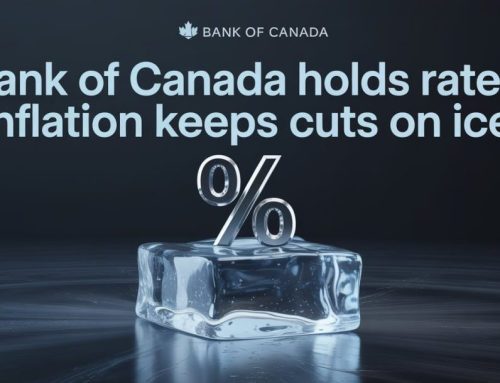Rising mortgage rates have affected the purchasing ability for many prospective homebuyers. Some have found themselves shut out of the market entirely.
This problem could be easily solved by making changes to the mortgage stress test, or abolishing it all together as some are calling for. The combination of soaring home values and rising interest rates is putting the dream of home ownership out of reach for far too many people.
But is changing or removing the stress test a good idea?
What is the Mortgage Stress Test
The stress test is another way of saying qualifying rate. More simply put, it means that you have to qualify with payments based on a rate higher than the one used to calculate your actual mortgage payment.
The rate used for qualification is the higher of the benchmark rate which is currently 5.25%, or 2% above the contract rate (the rate your payments are based on). When rates were lower at the start of the year the stress test rate was 5.25% for the vast majority of qualified mortgage borrowers.
Fast forward to today and the lowest mortgage rates have increase to 4.59% to 5.19%* which puts the stress test rate at 5.59% to 7.19%.
Qualifying for a Mortgage in January VS. December 2022
In early 2022, a $200,000 household income would qualify you for a mortgage of approximately $1,050,000… roughly 5.25 times the annual household income.
In December 2022, the same income would qualify you for a mortgage of $860,000, or roughly 4.25 times the annual income.
This is a pretty significant difference, which is why so many are now calling for changes.
Changes to the Mortgage Stress Test?
The stress test is controlled by the Office of the Superintendent of Financial Institutions (OSFI) who made an announcement about the stress test just last week. For now, they advised that they will not be making any changes as there is too much uncertainty with mortgage rates moving forward. This was their exact statement:
“In times of economic uncertainty with increasing vulnerabilities, the MQR has and continues to be a key tool supporting sound mortgage underwriting.”. (MQR = Mortgage Qualifying Rate)
While no one likes the mortgage stress test, it serves an important and valuable purpose. It is there to ensure that homeowners will still be able to afford to make their mortgage payments in a rising rate environment. If the stress test did not exist, then many would have been taking out much larger mortgages when rates were all in the 1% range. It’s hard enough for people right now as it is. But if the stress test didn’t exist, then so many people would be forced to sell.
The Logic Behind Removing the Mortgage Stress Test
The logic behind removing the stress test now is that rates have already increased, so it only makes sense to change or remove the stress test completely.
Right?
That would make sense if there was a guarantee that rates won’t go higher. But unfortunately, no such guarantee exists.
There is still a lot of uncertainty as to the future of mortgage rates as it all comes down to when the Bank of Canada can get inflation under control. While many believe that the December 7th rate increase will be the last in the cycle, there are many who believe that there are more to come. Even the Bank of Canada themselves stated that if inflation remains sticky, then more rate increases will be required.
For this reason, softening the stress test or eliminating it would be a risky move.
It can be quite disappointing knowing that you don’t qualify for the mortgage you need. But what’s worse is qualifying for it, but then being put in a situation where you are not able to make your payments.
This is what they want to avoid, and why removing the stress test at this stage would be a bad idea.
Where they should remove it is when people want to switch their mortgage to a lower rate at time of renewal. This is a major flaw in the stress test.
Conclusion
While people are now qualifying for much less than they did a year ago, we also need to take into consideration how much home prices of dropped. You may qualify for a smaller mortgage, but you will likely pay considerably less for the home as well. I explain this in detail in my recent blog on Higher Rates VS. Lower Home Prices.
Eventually we’ll see changes made to the stress test. But for now, it’s here to stay.
Please leave any questions or comments below!








Leave A Comment